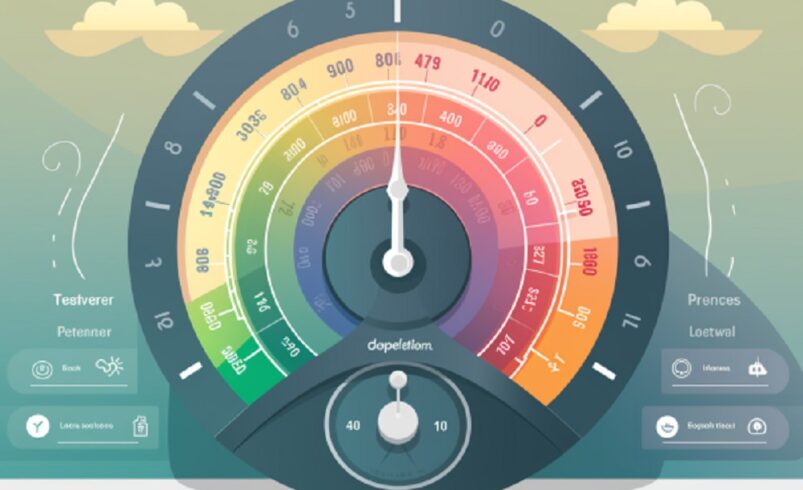The Crypto Fear-Greed Index: All You Need To Know

Understanding market sentiment can be crucial in making informed investment decisions in a volatile crypto sector. One tool that has gained popularity in recent years is the Crypto Fear and Greed Index.
This index gauges the emotions driving the market, providing investors with insights into whether the prevailing sentiment is driven by fear or greed. This guide closely examines what the Fear and Greed Index entails, how it operates, and what to consider before using it to determine when to buy or sell crypto.
What Is The Fear And Greed Index?
The Fear and Greed Index is similar to a barometer for the cryptocurrency market. It assigns a numerical value between 1 and 100, where a low score indicates a market overwhelmed by fear, signaling a potential buying opportunity.
Conversely, a high score suggests a market driven by greed, suggesting caution as it may indicate an overheated market ready for a correction.
A Hypothetical Scenario That Explains This Index
Consider a seasoned cryptocurrency investor, Alex, who has closely monitored the market. Alex observes that the Fear and Greed Index has dipped to a meager value of 10.
It indicates an environment of extreme fear, where many investors are hesitant to enter the market, fearing further price decline. With this information in mind, Alex remembers the adage often attributed to Warren Buffett, “buy when there’s blood in the streets.”
Understanding that this may present a potential buying opportunity, Alex decides to allocate some of his investment capital to select cryptocurrencies he believes have strong fundamentals. Over the following weeks, Alex observed the market gradually stabilizing, with some of the chosen assets showing signs of recovery.
As fear subsides and confidence returns to the market, the Fear and Greed Index begins to climb steadily. This increase reflects a shift in sentiment from fear towards a more balanced state.
Alex becomes increasingly cautious as the Fear and Greed Index approaches a value of 80, signaling a transition towards greed. Recognizing the potential for a market correction, Alex decides to reevaluate his portfolio and, if necessary, consider reducing exposure to specific assets.
Calculating The Fear And Greed Index
The index utilizes the following factors:
Volatility (25% of Index Value)
Volatility measures how much the prices of cryptocurrencies fluctuate. High volatility implies rapid and unpredictable price changes, which can be nerve-wracking for investors. High volatility contributes to a sense of fear in the Fear and Greed Index context.
Momentum And Volume (25% Of Index Value)
Momentum indicates the speed at which the market is moving. High momentum, especially when compared to historical averages, suggests a market where prices might rise too quickly. This can create apprehension among investors, contributing to the fear factor.
Social Media Mentions (15% of Index Value)
The index looks at how often Bitcoin is mentioned on social media platforms. When there’s a surge in mentions and hashtags, it suggests heightened market interest and participation. This trend can increase fear as more people become actively engaged with the market.
Surveys (15% of Index Value)
Conducting large-scale surveys provides insights into the sentiment of market participants. If most respondents express enthusiasm, it indicates a market leaning toward greed. This can influence the overall index, highlighting a prevailing greed sentiment.
Dominance (10% of Index Value)
Bitcoin dominance measures the proportion of the overall cryptocurrency market that is attributed to Bitcoin. When Bitcoin holds a significant share, it indicates a conservative market, contributing to a fearful outlook. Conversely, if alternative coins gain more market share, it may indicate a more adventurous market leaning toward greed.
Google Trends (10% of Index Value)
Google Trends reflects how frequently people are searching for information related to cryptocurrency. High search interest is often associated with a surge in market excitement. It can contribute to the overall greed factor in the index.
Reliability Of The Fear And Greed Index
The correlation between the Fear and Greed Index and Bitcoin’s price over time indicates that there might be a connection. However, it’s essential to remember that correlation does not imply causation. Other factors and events can also influence cryptocurrencies’ price.
Even though the Fear and Greed Index is reliable, it must be combined with other trading techniques to achieve the best results.
TradeZoneCrypto.com offers high-quality content catering to crypto enthusiasts. We’re dedicated to providing a platform for crypto companies to enhance their brand exposure. Please note that cryptocurrencies and digital tokens are highly volatile. It’s essential to conduct thorough research before making any investment decisions. Some of the posts on this website may be guest posts or paid posts not authored by our team, and their views do not necessarily represent the views of this website. TradeZoneCrypto.com is not responsible for the content, accuracy, quality, advertising, products, or any other content posted on the site.








